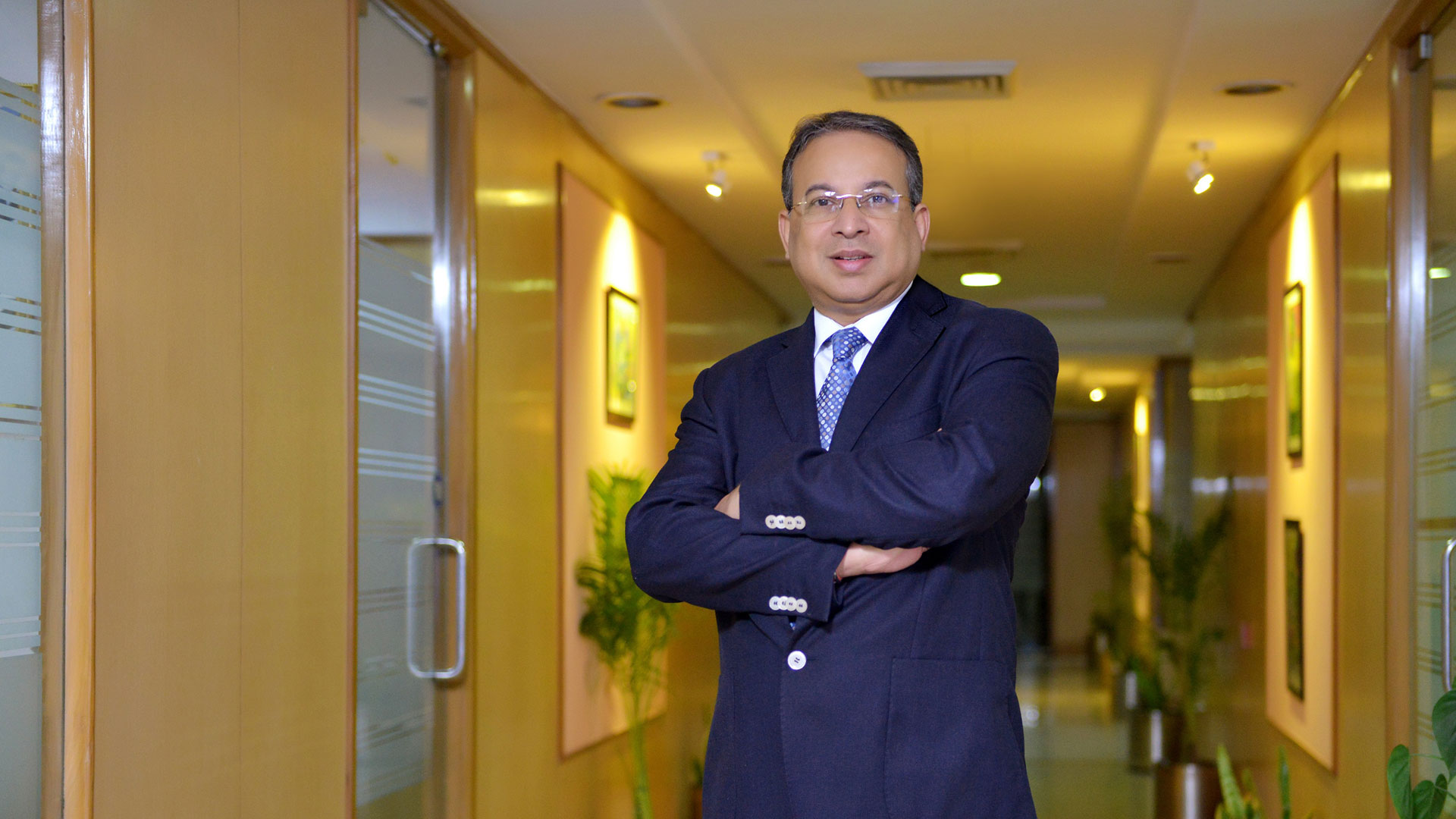July 2020 | 1880 words | 7-minute read
When India went into the world’s largest lockdown at midnight on March 25, 2020, to combat the Covid-19 pandemic, there were many who stepped up to keep the country running. Among them were the employees of Tata Power, India’s largest integrated power company, who ensured uninterrupted generation, transmission and distribution of electricity across geographies. Praveer Sinha, chief executive officer and managing director, Tata Power, on how they did it.
How did Tata Power keep running without interruption while India went into lockdown mode during the Covid-19 pandemic? Which part of the business was most difficult to reimagine?
As a standard practice, Tata Power is always geared up for disaster management. We have fallback options for N -1 supply, which is a plan for how the supply is restored from an alternative area if one system goes down. We also do N -2 supply, which is a third supply system that kicks in if two supply systems fail, thus enabling us to meet critical demands. Business continuity is something that we continuously evaluate as a process and practice it whenever the need arises.
This time, we immediately implemented a rota system for employees factoring in backups. We also have dry backup teams with people who can step in immediately if one of the teams on the rota system gets impacted. But many things about this crisis are different, so many of our responses are also new.
We moved from a physical handover of operations between shifts to a virtual handover. We figured out new travel arrangements to ensure that our staff could get to the plants, adhering to all social distancing norms and other precautions. We equipped the hostels at our plants to handle longer durations of stay.
However, thanks to a robust and resilient business continuity system, which takes care of eventualities, we were able to quickly adapt and implement. We have been able to run without a minute’s stop. Our plants have been working at full capacity, which for us means continuing a six-sigma performance. We have ensured that our 11 thermal and hydro generation plants across six states in the country continue to operate.
Our teams have risen to the occasion and delivered whether it is in generation, transmission or distribution, including at the renewable energy plants. It speaks volumes about Tata Power’s work processes, ethos and legacy.
Similarly, our distribution and transmission businesses continue to operate at five locations. Our renewable projects at 70 sites are running efficiently. We continued to serve all our customers at home and business establishments thanks to our 10,000 strong workforce of 2,000 officers and 8,000 contract workers who continued to work in all these plants.
Though we too have faced the challenges of lockdown and a deceleration in economic activities, we continue to operate these plants to ensure that the country continues to work under the current difficult circumstances. Our teams have risen to the occasion and delivered whether it is in generation, transmission or distribution, including at the renewable energy plants.
It speaks volumes about Tata Power’s work processes, ethos and legacy.
What is the biggest crisis you have seen before the Covid-19 pandemic?
A few years back there was a sandstorm in Delhi, which led to the whole power system getting cut off. Railway lines snapped. Metro trains were stuck. It also impacted hospitals and other emergency services. Such situations are a life-and-death issue. It was very challenging to get the grid back to normal.
Tata Power has also worked through calamities like the Mumbai floods of 2005 or even for that matter the heavy rains last year where all our dams — we have six dams between Mumbai and Pune — were overflowing. We had to ensure that the water was released in a way that it would not lead to flooding and evacuated nearby villages as a precaution.
Our people know the drill and our disaster management and business continuity plans are immediately put in place. The difference this time is that all our earlier challenges were for a few days. We never had a challenge that has continued for so long. This is the first time that all countries are impacted, and there is a virtual shutdown everywhere; we cannot tell with any certainty when things will return to normal.
Our people know the drill and our disaster management and business continuity plans are immediately put in place. The difference this time is that all our earlier challenges were for a few days. We never had a challenge that has continued for so long. This is the first time that all countries are impacted, and there is a virtual shutdown everywhere; we cannot tell with any certainty when things will return to normal.
Tata Power ensured uninterrupted power supply in Mumbai despite the demand fluctuation when lights were switched off for ‘9 minutes at 9pm’ in April to pay tribute to frontline workers. How did your team manage that challenge?
Managing the load on the system was difficult. You cannot suddenly ramp up or ramp down the load at coal-based plants. Since it was supposed to start at 9pm, we began to run our coal-based plants at minimum technical load from 8pm. We fortunately also have hydro power plants, so we enhanced them to full capacity. By 9pm, the latter were running at full capacity of their generation.
As people switched off their lights and the load started reducing, we kept reducing the hydro generation. After 9 minutes, when the load started increasing, we ramped up the hydro generation.
It was a fine balancing act that was complicated by an unexpected challenge — the total load reduction of Mumbai was nearly double of what we had anticipated. We were able to manage because we had done a mock drill a day before.
We were able to manage not just in Mumbai but in other locations like Delhi, Ajmer and Jamshedpur as well. It was a unique capability that was demonstrated not just by Tata Power but also by other power companies that were involved in managing the load during that period.
Tata Power employees have been on the frontline of fighting this pandemic…
The commitment of our employees has been phenomenal, but it is also important to note how their families have supported them. Everyone is scared right now. They know what can happen when they step outside. It speaks volumes about the culture of our organisation, about how Tata Power has taken care of its employees, and the connect we have with their families whereby they all feel that they are doing an important duty for the country. It is a matter of pride to contribute positively to the country in this difficult time and that spirit drives our employees to carry out their daily jobs, and their families always support them.
Their contribution in no way is less than other frontline workers. Whenever there have been calamities — be it the flash floods in Uttarakhand in 2013 or Cyclone Hudhud in Vizag in 2014 or cyclones in Odisha — our people have been the first to reach and restore power supply. In Uttarakhand, our engineers camped in forest areas and carried out all the activities to restore electricity. It is a matter of pride to contribute positively to the country in this difficult time and that spirit drives our employees to carry out their daily jobs, and their families always support them.
At this time, how are you communicating to your customers that Tata Power is a caring brand?
Working closely with the community is embedded in our business itself. We have rolled out initiatives in each of our locations.
One key objective was to keep relationships going in a way that both livelihoods and lives are protected. We helped our self-help groups, many of them empowering women, to continue getting a livelihood by making face masks. Nearly 5 lakh face masks have been produced and distributed by our teams to various communities. In some communities, we have helped farmers sell their produce to the markets.
In Mumbai and other places — as part of our financial inclusivity programme which helps those in need access government programmes — we worked with our field teams and NGO partners to help people get rations from the government.
In Delhi, we distributed 300,00 food packets for migrant workers staying in facilities organised by the government. We also worked with Tata Sons and The Indian Hotels Company to distribute almost 100,000 lunch and dinner packets over one month.
How do you view the impact of this pandemic on the nature of work and workspaces?
This has been a great learning for many of us. The fear that employees will not be able to deliver if they work from home or have flexi timings has, to a large extent, been proven wrong. It has demonstrated that many a times we underestimate our own employees and their capabilities.
Employees world over have proven that they are responsible whether supervised or unsupervised. Many have ended up being able to do more because they have saved the time lost in commuting and other distractions when they come to office. So, there will certainly be some activities that will continue to be carried out from home even after the lockdown is lifted and the pandemic passes. However, there is nothing like seeing and talking to individuals. Jobs are also about long-term relationship building. The challenge will be to engage employees who are working from home so that the social fabric, the emotional connect which they have with the organisation does not get frayed. How do we ensure that they don’t feel left out or isolated?
Those are some dimensions that we need to understand and work with.
How is Tata Power getting ahead of the next phase of the crisis?
Moving forward everyone will realise that digital technology is a necessity and not a luxury. It is an enabler for doing your job and improving your output and productivity. Adoption of technological interventions is becoming faster.
What has been your biggest takeaway from dealing with a crisis that has no corporate playbook?
That we have the wherewithal and commitment to overcome any sort of challenge. It is a great feeling that we have been able to do what we do as a team. It is in difficult periods that one actually sees the culture of an organisation — how its employees behave, how the management behaves, and how they collaborate to overcome challenges and adversity together. That is the biggest takeaway from this.
These are intangible values that organisations develop over time. You cannot put a price or value on this; it’s an invaluable asset.
What has been your personal mantra on coping with this?
You need to have faith and positivity that every crisis has a solution. You need to have the conviction that you can come out of this problem and come out of it better than anticipated.
—Monali Sarkar








